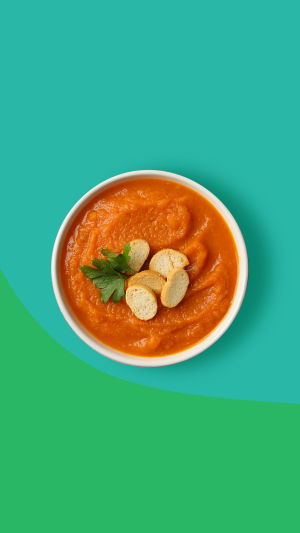Pumpkin puree is a refined food made from pumpkins. Its unique flavor and nutritional benefits have garnered widespread popularity worldwide.
Whether in home kitchens or high-end restaurants, pumpkin puree is a cherished delicacy.
<h3>The Process of Making Pumpkin Puree</h3>
The first step in making pumpkin puree is selecting the right pumpkin. To ensure high-quality puree, choose pumpkins that are mature and brightly colored. Common varieties such as sugar pumpkins and butternut pumpkins are ideal because they have a smooth, tender flesh that is perfect for pureeing.
The process of making pumpkin puree is relatively straightforward. Begin by peeling and deseeding the pumpkin, then cut it into small, uniform pieces. You can choose to either steam or bake the pumpkin pieces. Steaming helps retain more nutrients while baking intensifies the flavor.
If steaming, cook the pieces for 15-20 minutes, or until they are soft. For baking, place the pieces in an oven preheated to 200°C (400°F) and bake for 40-50 minutes, until they are tender and slightly caramelized.
Once the pumpkin pieces are cooked, let them cool before transferring them to a blender or food processor. Blend until smooth. For an even finer texture, pass the puree through a fine sieve. The pumpkin puree can be stored in the refrigerator and used in various recipes.
<h3>Nutritional Value of Pumpkin Puree</h3>
Pumpkin puree is both delicious and rich in essential nutrients. It is an excellent source of vitamin A, which is crucial for maintaining healthy vision, supporting the immune system, and promoting skin health.
Additionally, pumpkin puree is rich in vitamin C, vitamin E, and several B vitamins, all of which enhance the body's antioxidant defenses and support metabolic processes.
In terms of minerals, pumpkin puree contains potassium, magnesium, and iron. Potassium is crucial for heart health and assists in regulating blood pressure. Magnesium supports bone health and muscle function, while iron is essential for red blood cell production and can help prevent anemia.
Moreover, pumpkin puree is high in dietary fiber, which is beneficial for digestive health and can help prevent constipation. Fiber also plays a role in managing blood sugar levels and lowering cholesterol, thus supporting cardiovascular health.
<h3>Applications of Pumpkin Puree</h3>
Pumpkin puree boasts a wide range of applications and can be used in a variety of delicious dishes. For breakfast, you can incorporate pumpkin puree into oatmeal or yogurt to add both flavor and nutritional value.
In baked goods, pumpkin puree serves as a healthy alternative ingredient in recipes for bread, cookies, or cakes, making these items more nutritious while also contributing to a moist and tender texture.
In main courses, pumpkin puree can be used as a flavorful sauce or ingredient. For example, mixing pumpkin puree with cream, onions, and spices can create a delicious pumpkin cream soup.
When combined with meat, it can form a unique pumpkin meat sauce. Additionally, pumpkin puree can serve as a base for pizza, adding a distinct and delightful flavor.
Pumpkin puree is also widely utilized in baby food. Due to its smooth texture and easy digestibility, it is an excellent choice for infants. You can mix pumpkin puree with other fruits or vegetables to create nutritious baby food.
Pumpkin puree's blend of nutrition and versatility makes it a popular choice in both everyday meals and gourmet cooking. Its health benefits and culinary applications ensure that it can be enjoyed in numerous ways, contributing to both well-being and culinary delight.
Mastering the art of preparing and using pumpkin puree can make it a valuable addition to your culinary repertoire, enriching your diet with its exceptional flavors and health benefits.





